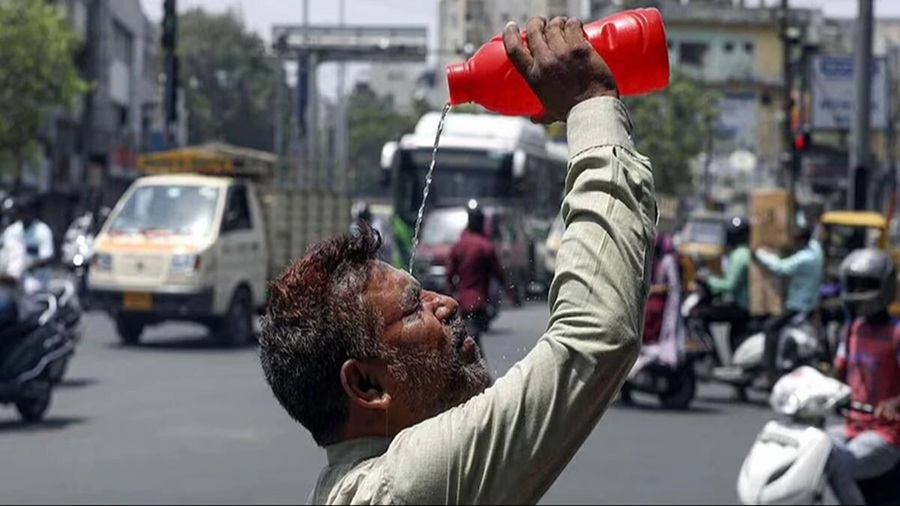In the peak of the 2025 Indian summer, many regions are experiencing a convergence of extreme heat and soaring humidity that has driven the apparent “feels-like” temperatures well beyond 45 °C, exacerbating health risks and prompting multiple layers of government advisories and warnings across central and northern India. Delhi alone has seen actual temperatures exceed 40 °C while residents report heat-index values approaching 50 °C, as the India Meteorological Department (IMD) and the National Disaster Management Authority (NDMA) issue heat–wave and hot‐and‐humid weather bulletins for various states. Public and occupational health experts warn that prolonged exposure to such oppressive conditions can overwhelm physiological cooling mechanisms, especially when wet‐bulb temperatures approach critical thresholds, making adherence to hydration, behavioral, and infrastructural recommendations essential.
Current Heat and Humidity Conditions
Delhi has endured consecutive days with maximum air temperatures above 40 °C, but compounded humidity has pushed the heat index — or “real‐feel” temperature — to as high as 48.5 °C, significantly increasing heat stress on residents. Meanwhile, the IMD reports that “feels‐like” values in the national capital region are nearing 50 °C, driven by high relative humidity, solar radiation, and urban heat‐island effects. The early onset of this year’s heat wave was first flagged by the IMD on April 7, 2025, when above‐normal temperatures were forecast nationwide through June, marking the hottest April in 125 years with mean temperatures of 22.04 °C. Across North‐West India, especially in Rajasthan and Haryana, the IMD has predicted a “double heat‐wave” scenario in which two successive spikes in temperature well above seasonal norms stress both human health and agricultural systems. Even short bursts of oppressive conditions can prove dangerous: recent analyses indicate that wet‐bulb temperatures of 31 °C at near‐100% humidity significantly impair the body’s ability to cool itself, potentially leading to fatal outcomes in otherwise healthy individuals.
Health and Environmental Impacts
High heat‐index values and humidity levels accelerate dehydration, heat exhaustion, and heatstroke, with vulnerable populations — such as the elderly, children, outdoor workers, and those with chronic illnesses — at greatest risk. Historical data show that heat waves are now India’s deadliest natural disaster in terms of mortality, with projections indicating a sharp rise in heat‐related deaths if temperatures continue trending upward. Agricultural laborers working without adequate cooling or rest breaks face acute symptoms including dizziness, nausea, and muscle cramps, while prolonged soil desiccation and stress on water resources threaten food security in heavily farmed regions. Urban areas experience amplified effects due to concrete heat retention and limited vegetation, trapping warmth long after sunset and preventing nocturnal relief. The combination of heat and humidity also degrades air quality by intensifying ozone formation, which exacerbates respiratory conditions such as asthma and chronic obstructive pulmonary disease.
Government Advisories and Warnings
On May 19, 2025, the IMD issued a press release forecasting heat‐wave conditions in isolated pockets of West Rajasthan through May 24 and hot‐and‐humid weather over Odisha on May 19–20, along with warnings of “warm night” conditions in Haryana and Rajasthan during May 19–21. The NDMA’s Impact Based Weather Warning Bulletin (Night), dated May 18, warned of severe heat‐wave conditions in isolated areas of West Rajasthan from May 21–23 and urged preparedness measures at the district level. According to NDMA guidelines, a heat wave is not declared until maximum temperatures reach at least 40 °C in plains and 30 °C in hilly regions, but any forecast exceeding normal maximums by 4–5 °C triggers early‐warning protocols. NDMA’s “Do’s & Don’ts” recommend avoiding outdoor exposure between 12 p.m. and 3 p.m., maintaining regular fluid intake even in the absence of thirst, wearing lightweight, light‐colored fabrics, and checking on vulnerable neighbors and family members. State disaster management authorities have been instructed to keep cooling centers operational, stock water and electrolytes at public facilities, and issue daily bulletins for district administrations to coordinate rapid response.
Safety Tips for Individuals and Communities
- Hydration: Drink water or oral rehydration solutions at least every 20–30 minutes, even before feeling thirsty, to maintain electrolyte balance and blood volume.
- Clothing and Activity: Wear breathable fabrics, wide‐brimmed hats, and UV‐blocking sunglasses; schedule strenuous tasks for early morning or late evening hours to minimize peak‐heat exposure.
- Cooling Strategies: Utilize air conditioning or misting fans where available; seek public cooling centers if home conditions are inadequate; take cool showers or sponge baths to lower core temperature.
- Health Monitoring: Recognize and respond promptly to symptoms of heat exhaustion (heavy sweating, weakness, cold clammy skin) and heatstroke (confusion, hot dry skin, loss of consciousness); call emergency services if heatstroke is suspected.
- Community Support: Establish buddy systems for the elderly, disabled, and children to ensure regular check-ins; schools and workplaces should implement heat-action plans following NDMA and IMD advisories.
Conclusion
The convergence of extreme heat and high humidity in India’s 2025 summer underscores the critical need for both systemic and individual adaptation measures. With IMD forecasts indicating continued heat‐wave days and NDMA bulletins urging vigilant preparedness, communities must act on established guidelines to mitigate health risks. As climate trends point toward increasingly frequent and intense heat events, reinforcing infrastructure for cooling, ensuring widespread public awareness, and strengthening early‐warning systems will be vital to safeguarding lives and livelihoods in the years ahead.
